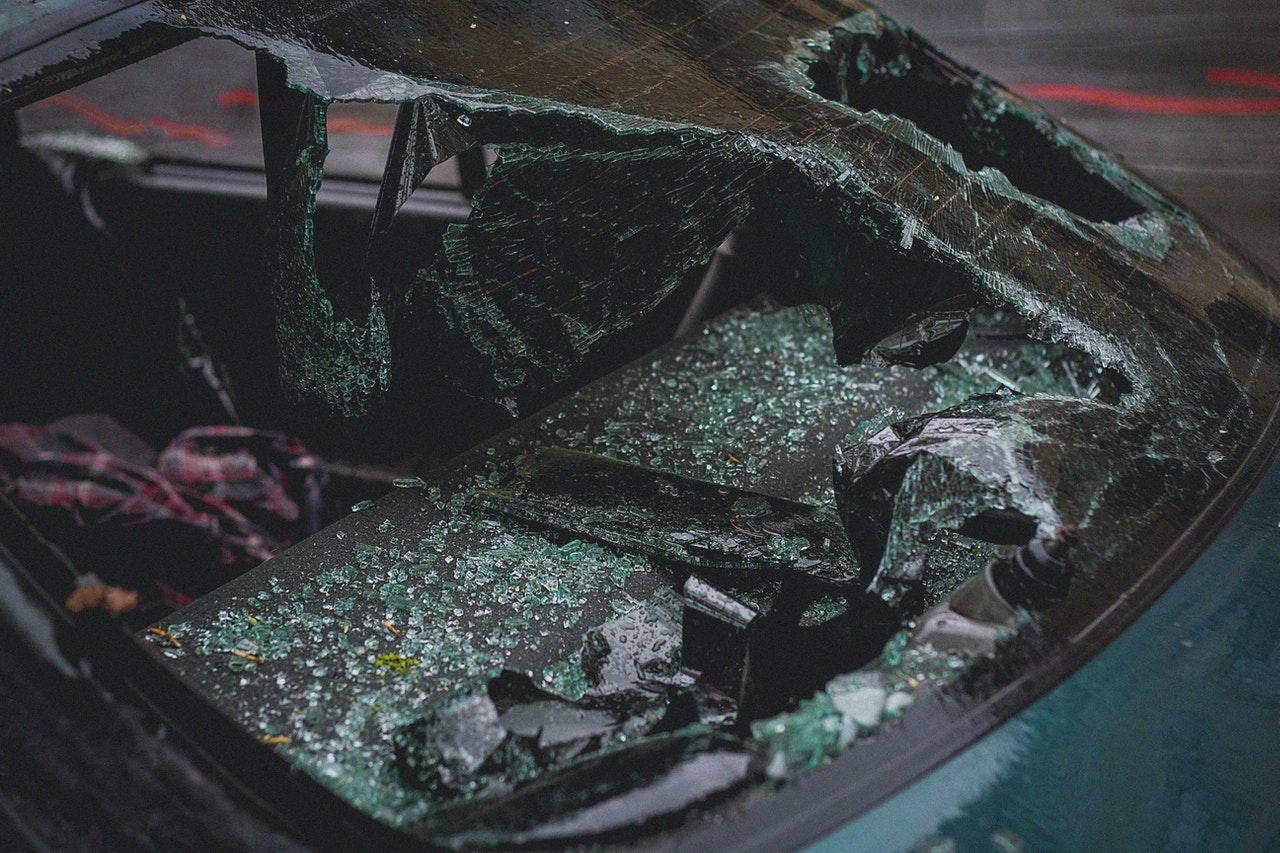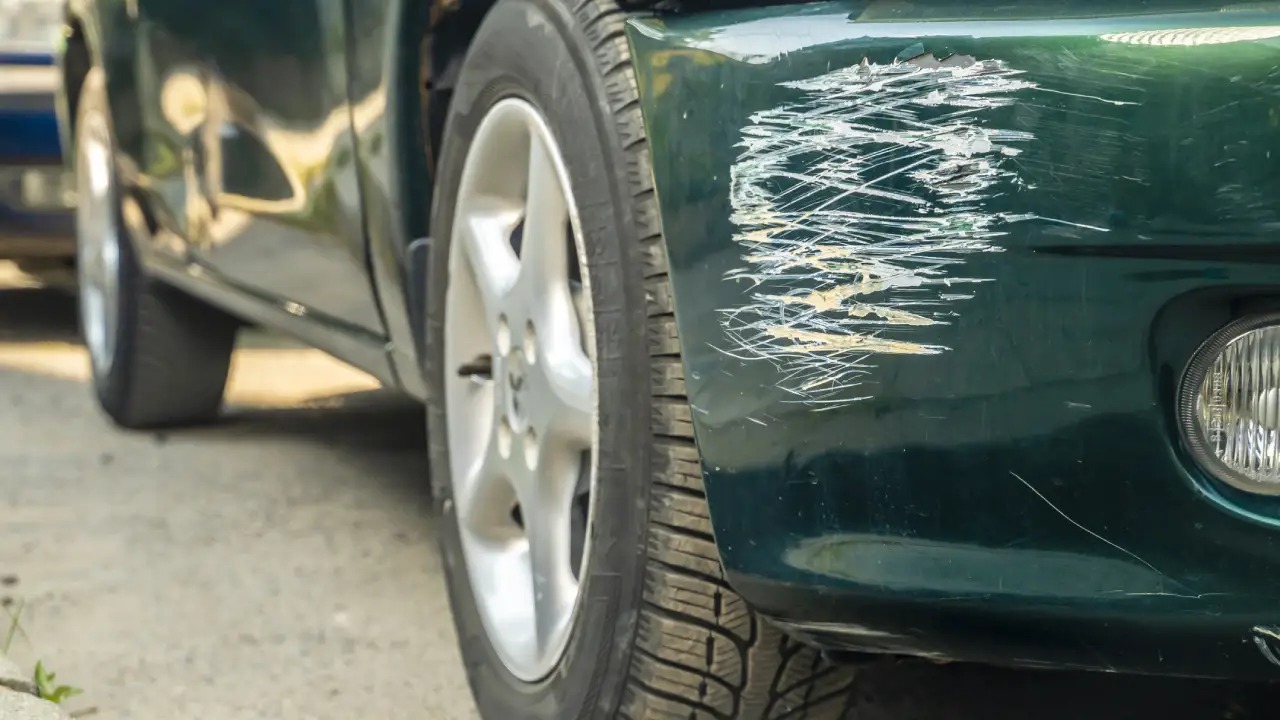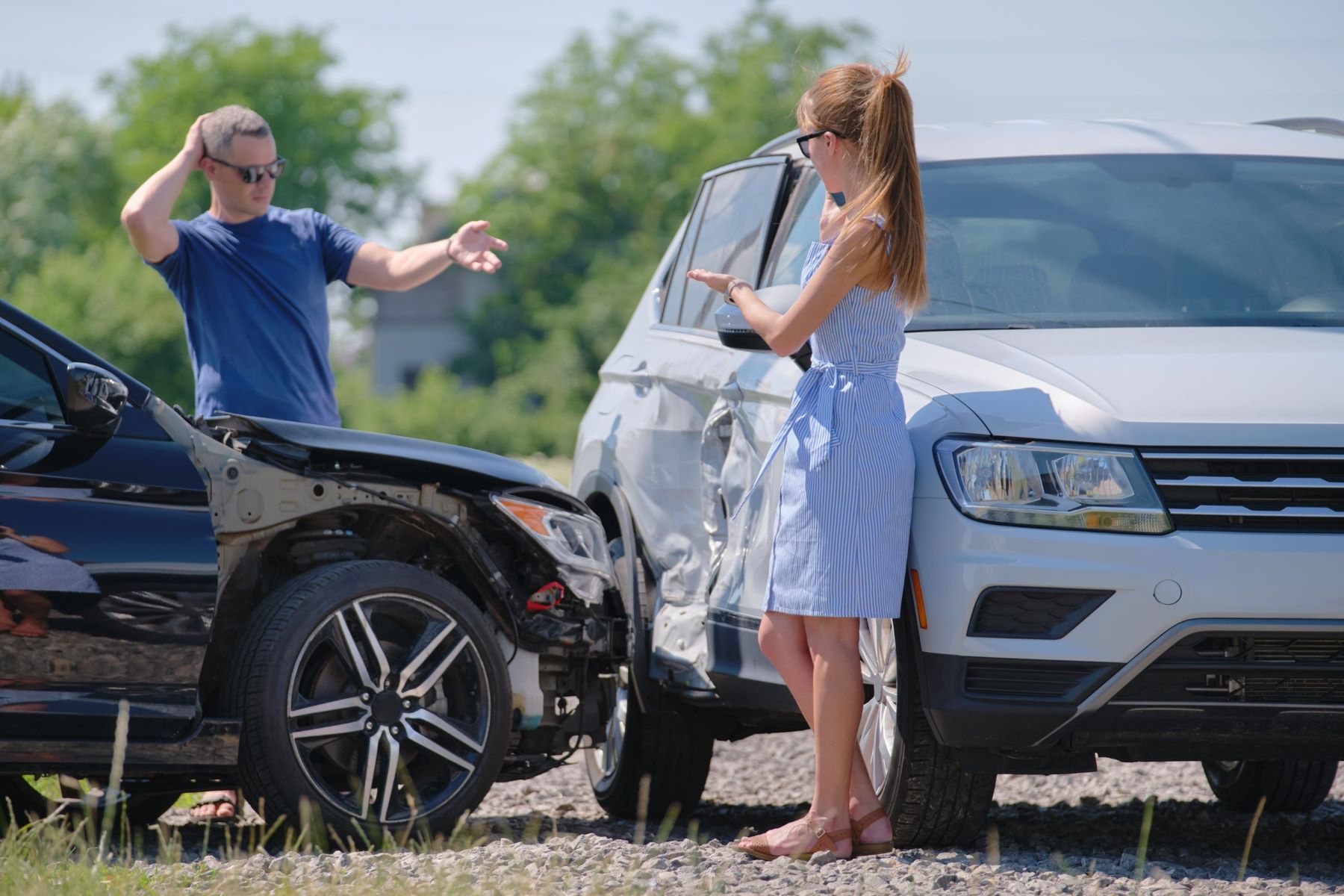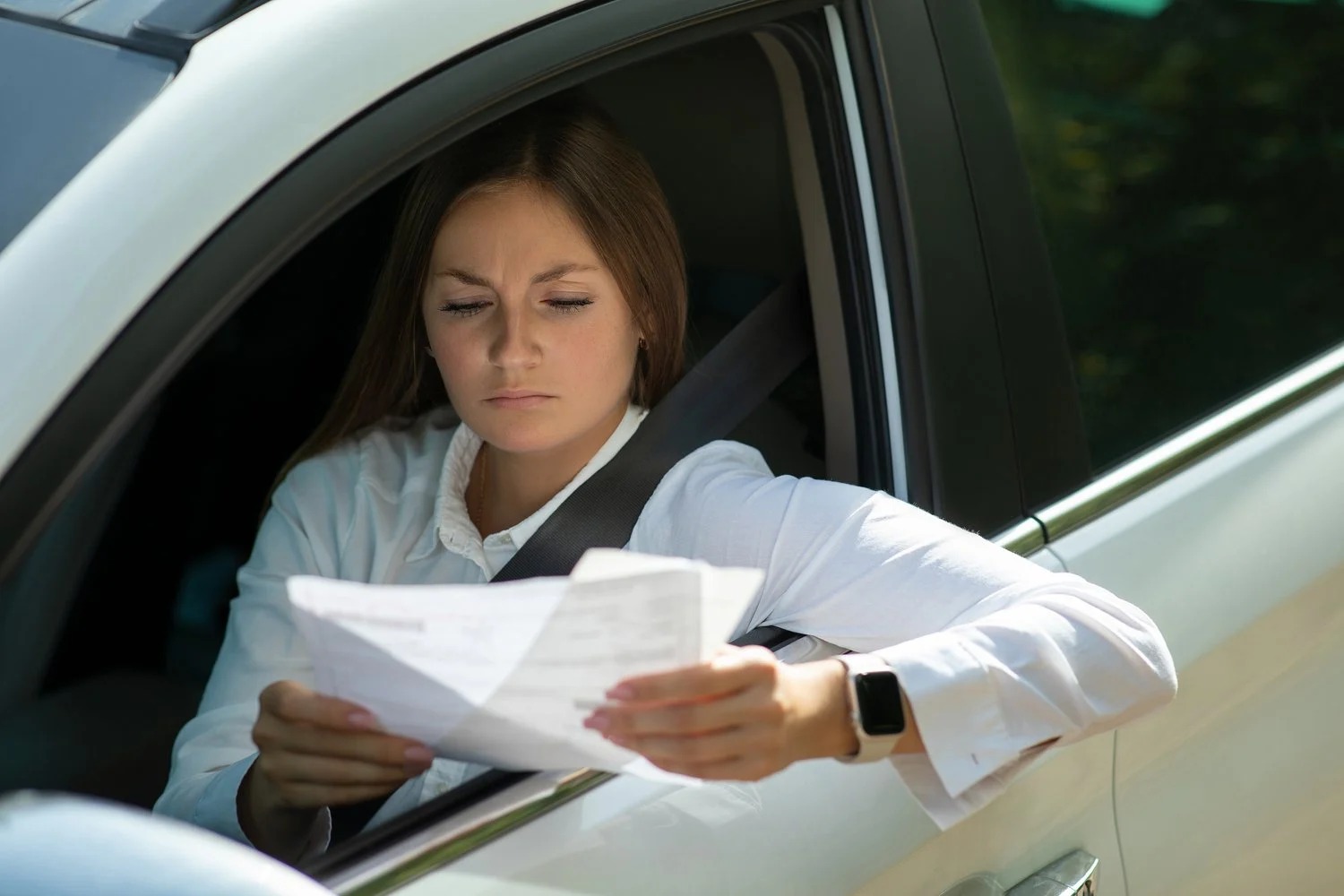Home>Finance>What Happens If You Don’t Have Car Insurance In California?


Finance
What Happens If You Don’t Have Car Insurance In California?
Published: November 14, 2023
Find out the financial consequences of driving without car insurance in California. Protect your finances and comply with the law by getting insured today.
(Many of the links in this article redirect to a specific reviewed product. Your purchase of these products through affiliate links helps to generate commission for LiveWell, at no extra cost. Learn more)
Table of Contents
- Introduction
- Legal Requirements for Car Insurance in California
- Penalties for Driving Without Car Insurance in California
- Financial Responsibility Options in California
- Obtaining Car Insurance in California
- Consequences of Driving Without Car Insurance in California
- Alternatives to Car Insurance in California
- Conclusion
Introduction
Car insurance is a requirement that drivers in California must adhere to in order to legally operate a vehicle. It is an essential form of financial protection that covers the costs of damages and injuries resulting from car accidents. However, not all drivers in California may have car insurance, either due to financial constraints or simply neglecting to obtain it.
In this article, we will explore what can happen if you don’t have car insurance in California. We will discuss the legal requirements for car insurance, the penalties for driving without it, the available options for establishing financial responsibility, and the consequences that can arise from driving uninsured. Additionally, we will explore alternatives to traditional car insurance that may be considered in certain circumstances.
It is important to note that the information provided in this article is based on California state laws and regulations. The consequences and considerations discussed may vary depending on your specific location. It is always advisable to consult with the relevant authorities or a legal professional for specific advice.
Now, let’s delve into the world of car insurance in California and uncover the potential ramifications of not having proper coverage.
Legal Requirements for Car Insurance in California
California law mandates that all drivers must carry a minimum amount of car insurance to legally operate a vehicle on the roads. These requirements are in place to ensure that drivers have the financial means to cover any damages or injuries that may occur as a result of a car accident. The minimum car insurance requirements in California are:
- Bodily Injury Liability Coverage: $15,000 per person and $30,000 per accident
- Property Damage Liability Coverage: $5,000
Bodily Injury Liability Coverage provides financial protection if you are responsible for causing injury or death to another person in a car accident. It covers medical expenses, pain and suffering, and lost wages of the injured party. Property Damage Liability Coverage, on the other hand, helps pay for damages to another person’s property, such as their vehicle, fence, or building.
These minimum requirements serve as a baseline level of coverage, but it is important to note that they may not be enough to fully protect your assets in the event of a serious accident. It is highly advisable to consider higher coverage limits and additional types of coverage, such as comprehensive and collision insurance, to provide greater financial protection.
Proof of car insurance must be carried in the vehicle at all times and presented to law enforcement, if requested. Failure to provide proof of insurance can result in fines and penalties, even if you have insurance coverage but simply do not have the proof readily available.
It is also worth noting that California is an “at-fault” state when it comes to car accidents. This means that the driver who is found to be at fault for the accident is responsible for covering the costs and damages. Car insurance helps ensure that the at-fault driver has the necessary financial means to fulfill their obligation.
Now that we understand the legal requirements for car insurance in California, let’s explore the penalties that drivers may face if they are caught without insurance.
Penalties for Driving Without Car Insurance in California
Driving without car insurance in California can have significant consequences. The state takes the issue of uninsured motorists seriously and has implemented strict penalties to discourage individuals from driving without proper coverage. The penalties for driving without car insurance in California include:
- Fines: If you are caught driving without proof of car insurance, you may face fines ranging from $100 to $200 for a first offense. Subsequent offenses can result in higher fines.
- Vehicle Impoundment: In some cases, your vehicle may be impounded if you are unable to provide proof of insurance. The impoundment period can range from one to 30 days, and you will be responsible for the associated costs.
- Suspension of Driver’s License: Driving without insurance can lead to the suspension of your driver’s license. The length of the suspension depends on the number of offenses and can range from one month to one year.
- DMAF (Registration) Hold: If you are caught driving without insurance, the Department of Motor Vehicles (DMV) can place a hold on your vehicle registration. This means you will not be able to renew your registration until you provide proof of insurance.
- SRC (Suspension and Restitution Center) Program: In certain cases, individuals who are caught driving without insurance may be required to enroll in the SRC program. This program involves meeting specific requirements, such as attending classes and paying restitution fees, before your driving privileges can be reinstated.
It is important to note that these penalties can have long-lasting effects on your driving record and may result in increased insurance premiums. Additionally, if you are involved in an accident while uninsured, you may be held personally liable for the damages and injuries, potentially leading to significant financial burden.
To avoid these penalties and ensure compliance with California laws, it is crucial to maintain proper car insurance coverage. Now, let’s explore the financial responsibility options available for California drivers.
Financial Responsibility Options in California
While car insurance is the most common method of establishing financial responsibility in California, there are alternative options available for drivers to comply with the state’s requirements. These options include:
- Self-Insurance: If you own a large number of vehicles or have a fleet of vehicles, you may be eligible to self-insure. This requires demonstrating your financial ability to cover any potential losses or damages resulting from car accidents.
- Cash Deposit: Instead of purchasing car insurance, you can make a cash deposit of $35,000 with the California Department of Motor Vehicles (DMV). This deposit serves as a form of financial security to cover any potential damages or injuries caused by an uninsured driver.
- Surety Bond: You can obtain a surety bond from a licensed surety company. The bond acts as a guarantee that the company will cover any financial losses or damages resulting from your actions as an uninsured driver.
It is important to note that these alternatives may not be feasible or accessible for everyone. They often require significant financial resources or specific circumstances to qualify. For most drivers, traditional car insurance remains the most practical and widely available option to meet the financial responsibility requirements.
When considering the financial responsibility options, it is crucial to evaluate your individual circumstances and consult with an insurance professional or legal advisor to determine the most suitable choice for you.
Now that we have explored the different options for establishing financial responsibility in California, let’s discuss how you can obtain car insurance to comply with the state’s requirements.
Obtaining Car Insurance in California
Obtaining car insurance in California is a relatively straightforward process, and there are numerous insurance providers available to choose from. To find suitable car insurance coverage, follow these steps:
- Research Insurance Providers: Start by researching different insurance companies and gathering quotes to compare coverage options and premiums. Consider factors such as customer reviews, financial stability, and the range of coverage available.
- Determine Your Coverage Needs: Assess your individual needs and determine the type and amount of coverage you require. Consider factors such as your driving record, the value of your vehicle, and your personal financial situation.
- Get Multiple Quotes: Contact insurance companies and request quotes based on your coverage needs. Be sure to provide accurate and complete information to receive accurate quotes.
- Compare Quotes: Compare the quotes you receive from different insurance providers, considering both the coverage offered and the premiums. Look for a balance between adequate coverage and affordable rates.
- Consider Additional Coverage Options: In addition to the mandatory liability coverage, consider additional types of coverage such as comprehensive and collision insurance, which can provide added protection for your vehicle in the event of theft, vandalism, or accidents.
- Read and Understand the Policy: Carefully review the terms and conditions of the insurance policy before making a final decision. It is essential to understand the coverage limits, deductibles, and any exclusions or limitations.
- Finalize Your Policy: Once you have chosen an insurance provider, contact them to finalize the purchase of your policy. Ensure that you provide all necessary documentation and payment to activate your coverage.
It is also advisable to regularly review your car insurance coverage and reassess your needs to ensure that you have adequate protection. Life circumstances, such as changes in your vehicle or driving habits, may warrant adjustments to your policy.
Remember that car insurance not only fulfills legal requirements but also provides valuable financial protection in case of accidents, theft, or damage. Responsible drivers prioritize having appropriate car insurance coverage to safeguard their finances and assets.
Now that we have covered obtaining car insurance, let’s explore the potential consequences of driving without car insurance in California.
Consequences of Driving Without Car Insurance in California
Driving without car insurance in California can lead to severe consequences that extend beyond financial penalties. These consequences can impact various aspects of your life, including your finances, driving record, and legal standing. Here are the potential ramifications of driving without car insurance:
- Financial Liability: If you cause an accident without insurance coverage, you may be personally liable for the costs of damages and injuries. This can lead to significant financial burden, including medical expenses, property damage, and legal fees.
- Increased Insurance Rates: Even if you obtain car insurance after being caught driving uninsured, insurance providers may view you as a high-risk driver. As a result, you may face higher premiums for an extended period of time, making it more expensive to maintain insurance coverage.
- Driver’s License Suspension: Driving without car insurance can result in the suspension of your driver’s license. The length of the suspension can vary depending on the number of prior offenses and can range from one month to one year.
- Legal Penalties: In addition to fines, your driving privileges may be further restricted or suspended. Repeat offenses may lead to more severe penalties, including imprisonment in extreme cases.
- Limited Options for Vehicle Registration: Driving without insurance can result in a hold being placed on your vehicle registration, preventing you from renewing it until you provide proof of insurance. This can cause inconvenience and disrupt your ability to legally operate your vehicle.
- Difficulty Obtaining Future Insurance Coverage: Being labeled as an uninsured driver can make it challenging to find affordable car insurance coverage in the future. Insurance companies may consider you high-risk and either deny coverage or charge significantly higher premiums.
- Risk of Personal Lawsuits: Without car insurance, you are vulnerable to personal injury or property damage lawsuits from other parties involved in an accident. This can lead to legal battles and potential personal financial ruin.
It is essential to recognize the serious ramifications of driving without car insurance in California. Not only does it put your financial well-being at risk, but it can also have long-term consequences for your driving record and legal standing. Ensuring you have proper insurance coverage is crucial for your own protection and the protection of others on the road.
Now, let’s explore alternatives to traditional car insurance that may be considered in certain circumstances.
Alternatives to Car Insurance in California
While car insurance is the most common method of meeting the legal requirements for financial responsibility in California, there are alternative options available for certain individuals who may find it difficult to obtain traditional coverage. These alternatives include:
- California Low-Cost Automobile Insurance Program (CLCA): This program is designed to provide affordable liability insurance to income-eligible drivers. It offers lower-cost coverage options for drivers who meet the program’s income and eligibility requirements. The CLCA can be a viable solution for individuals who are unable to afford traditional car insurance premiums.
- Uninsured Motorist Fee: In California, eligible individuals have the option to pay an uninsured motorist fee to the DMV. By paying this fee, drivers are essentially self-insuring against liability claims arising from accidents they cause while uninsured. However, it’s important to note that this option does not provide physical damage coverage or protect against claims made by other parties involved in an accident.
- Transportation Network Company (TNC) Policies: If you drive for a ridesharing or delivery service like Uber or Lyft, you may be eligible for coverage through their insurance policies. These policies typically offer coverage while you are actively engaged in providing services for the company.
- Non-Owners Car Insurance: If you frequently borrow or rent vehicles, non-owners car insurance can provide liability coverage for accidents you may cause while driving a vehicle you do not own. This can be a cost-effective alternative for individuals who do not own a car but still need coverage.
It is important to carefully consider these alternatives and evaluate whether they meet your specific needs and circumstances. While they may offer some form of financial responsibility compliance, they may not provide comprehensive coverage or protect against all potential risks and liabilities.
Furthermore, it is crucial to note that these alternative options are not available to everyone, and eligibility requirements and coverage limitations may apply. It is always advisable to consult with an insurance professional or the relevant authorities to determine the most suitable alternative for your specific situation.
Now that we have explored alternative options to traditional car insurance, let’s conclude our discussion.
Conclusion
Car insurance is a legal requirement in California, and driving without proper coverage can lead to serious consequences. It is crucial for all drivers to understand the legal requirements for car insurance and the potential penalties for non-compliance.
Obtaining car insurance is the most common and practical way to meet the financial responsibility requirements in California. It provides essential protection, not only for your own financial well-being but also for the well-being of others on the road. It is important to research and compare insurance providers to find coverage that meets your needs and fits your budget.
Driving without car insurance can result in fines, driver’s license suspension, vehicle impoundment, and even legal penalties. Additionally, being uninsured may expose you to personal liability for damages and injuries, potentially resulting in significant financial burden.
While traditional car insurance is the preferred option, there are alternatives available for certain individuals, such as the California Low-Cost Automobile Insurance Program (CLCA) and non-owners car insurance. These alternatives can provide limited coverage and help meet the legal requirements for financial responsibility.
To ensure compliance with California law and protect yourself financially, it is crucial to maintain valid car insurance coverage. Regularly review your policy, reassess your coverage needs, and promptly address any changes or updates to ensure you have adequate protection.
Remember, driving without car insurance not only puts you at great financial risk but also compromises the safety and financial well-being of others sharing the road. By maintaining proper car insurance coverage, you can drive with peace of mind, knowing you have taken the necessary steps to fulfill your legal obligations and protect yourself and others in the event of an accident.














